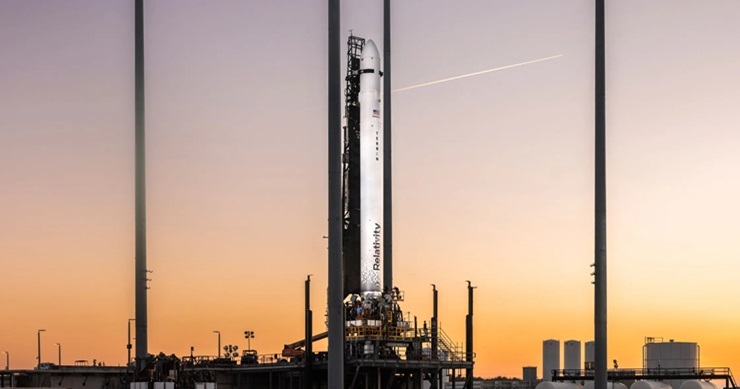Relativity Space, a California-based startup, is ready to launch its almost entirely 3D-printed rocket, Terran 1, from Cape Canaveral, Florida. This launch marks a significant step towards the broader use of 3D printing in the space industry. The company hopes to eventually use the technology to build tools, spacecraft, and infrastructure in orbit, on the moon, or Mars. The Terran 1 rocket, which is 85% 3D-printed, will be closely monitored during its test flight to gather data and learn from the flight. The company has designed its own massive 3D printers to create the rocket stages and components, which reduces labor costs and simplifies the supply chain. Relativity Space aims to use Terran 1 to lift satellites for other companies and NASA into Earth orbit at a lower cost. They also plan to build a larger, fully reusable rocket, Terran R, to compete with SpaceX’s Falcon 9.
Key Takeaways:
- Relativity Space, a California-based startup, is preparing to launch its almost entirely 3D-printed rocket, Terran 1, marking a significant step forward in the application of 3D printing technology in the space industry.
- The Terran 1 rocket, which is 85% 3D-printed, is the largest 3D-printed object in the world, and the company’s future goal is to increase this to 95% through the use of their own massive 3D printers.
- The company aims to use the Terran 1 rocket to lift satellites into Earth orbit for other companies and NASA at a comparatively lower cost, and plans to test launching payloads to Mars with a larger, fully reusable rocket, Terran R, by late 2024.
“Eighty five percent of the rocket by mass, including its major structures, were 3D-printed—only the computing system, electronics, and readily available parts like fasteners were not. Other companies have used 3D-printed parts before, but this is on another level: Relativity Space refers to Terran 1 as the world’s largest 3D-printed object.”
More details: here


Leave a Reply